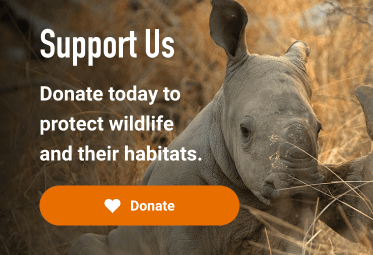Harnessing the critical role of technology in today’s conservation efforts
Transformative approaches are needed to tackle the world’s most pressing biodiversity issues.
Published 01 January 2021
The pandemic has seen a collapse of tourism revenues, increasing poaching and putting local livelihoods under threat. With the UN reporting that 1 million species now face extinction in the next decade, the situation is overwhelming, but we must stay optimistic. Working together, we must learn, act fast and improve our approach to make a difference.
Technology can accelerate our response to conservation issues on a global scale
Conservation technology covers various digital solutions and devices, including networks, satellites, sensors, wireless systems and cameras that offer a real-time, data-driven approach to ecosystem protection. Just like enterprises turn to data for analysis and insights, technology helps conservationists understand changes better and make decisions for actions on the ground. It also introduces the possibility for engagement and education, with better connectivity enabling local communities to play a vital role in conservation activities.
We already have so much incredible technology and the sector has rapidly evolved over the last five years. Technology can now be made available in remote environments. We’ve learnt the need to make it openly accessible and more affordable while applying innovations such as Internet of Things, Artificial Intelligence and Satellites. So what’s holding us back from deploying these conservation solutions at scale to tackle the most pressing biodiversity issues at hand?
Overcoming challenges to present better opportunities ahead
- Many incredible solutions already exist but are not widely used. True conservation impact is achieved by getting data and technologies to those it serves and thereby influencing decisions to affect change. Yet conservationists working in developing nations, with the largest proportion of intact ecosystems, often lack connectivity, communications and digital infrastructure, as a foundation for new solutions. We need to better connect countries with the technologies that will help them implement the Post 2020 Biodiversity Framework, which is a new set of ambitious UN-backed goals and targets to reverse the decline of species globally.
- More investment in conservation technology is needed. Significant investment in climate change technologies is helping us move away from a reliance on fossil fuels. The same scale of impact is now needed in the biodiversity space, to increase adoption of game-changing tools. Together, our partners NTT and Cisco have demonstrated the power of sharing investment and resources on Connected Conservation projects in Kenya, South Africa and Zambia. Individual corporations, make great contributions, but they cannot bear the load alone and form only part of the solutions.
- New funding must incentivise collaboration. Today, organisations involved in the research and implementation of technologies are working on a grant cycle in a competitive environment. Not-for-profits experience barriers to collaboration, so, new funding must incentivise a shared multi-partner approach that ensures we bring together our collective capabilities and support key tools. Working together to build a pipeline of investment-ready programmes that will power change.
- Robust impact reporting is needed. Improved governance and measurement will help capture investor's growing interest in biodiversity. Still, quantitative tools and harmonised data approaches need to be in place to harness their enthusiasm and demonstrate the value of their investment. This is a complex challenge to bring together the disparate data owners. Technology must help make biodiversity data more digestible and measurable for investment action.
- Develop local capacity and communities' engagement in conservation activities. For successful conservation, communities and ingenious people are key stakeholders in conservation decisions and activities. Communications and digital infrastructure helps communities use tools (social and knowledge sharing platforms) to come together for shared benefits, ask questions, report conservation issues, learn about conservation and make decisions about their future.
- Solutions must be sustainable for long-term impact. Those organisations in communities that desperately require conservation technologies typically have small budgets and cannot pay for high ongoing maintenance costs beyond the grant period. Over the last few years, many conservationists have been exploring sustainable operating models with limited success, as there are no big paying customers in conservation. Making technology more affordable, alongside new thinking on sustainable funding solutions is needed; exploring subsidies from commercial applications in high-paying sectors, donations, small profits and philanthropy.
Connected Conservation Foundation is proud to work with big technology companies, the UK Government and other NGO organizations to influence change through our projects.
Ahead of COP26 and COP15 this year, we would like to deepen work with policymakers to help find solutions to these challenges. One route is to expand the Climate Change Technology Network (CTCN) funding and resources to include Biodiversity Technologies. Exploring if CTCN can either: (a.) expand its scope further to technologies that help restore wildlife populations and ecosystems, or (b.) be replicated into a new BTCN model to support the CBD Post-2020 implementation and resource mobilisation.
Together we can do more to put the limited resources we have into technologies that can help drive transformational approaches. As a collective force, we have the tools and innovation at our disposal and time is running out to come together and apply them to addressing urgent biodiversity issues.
Get in touch at info@connectedconservation.foundation


